
Cottage gardens capture the essence of traditional English charm—overflowing with colour, texture, and life. Combining fragrant flowers, rustic materials, and informal design, they create spaces that feel both romantic and lived-in. Discover how to design a timeless cottage garden filled with beauty, abundance, and natural harmony throughout the seasons.
Below are the key features that define cottage garden design.
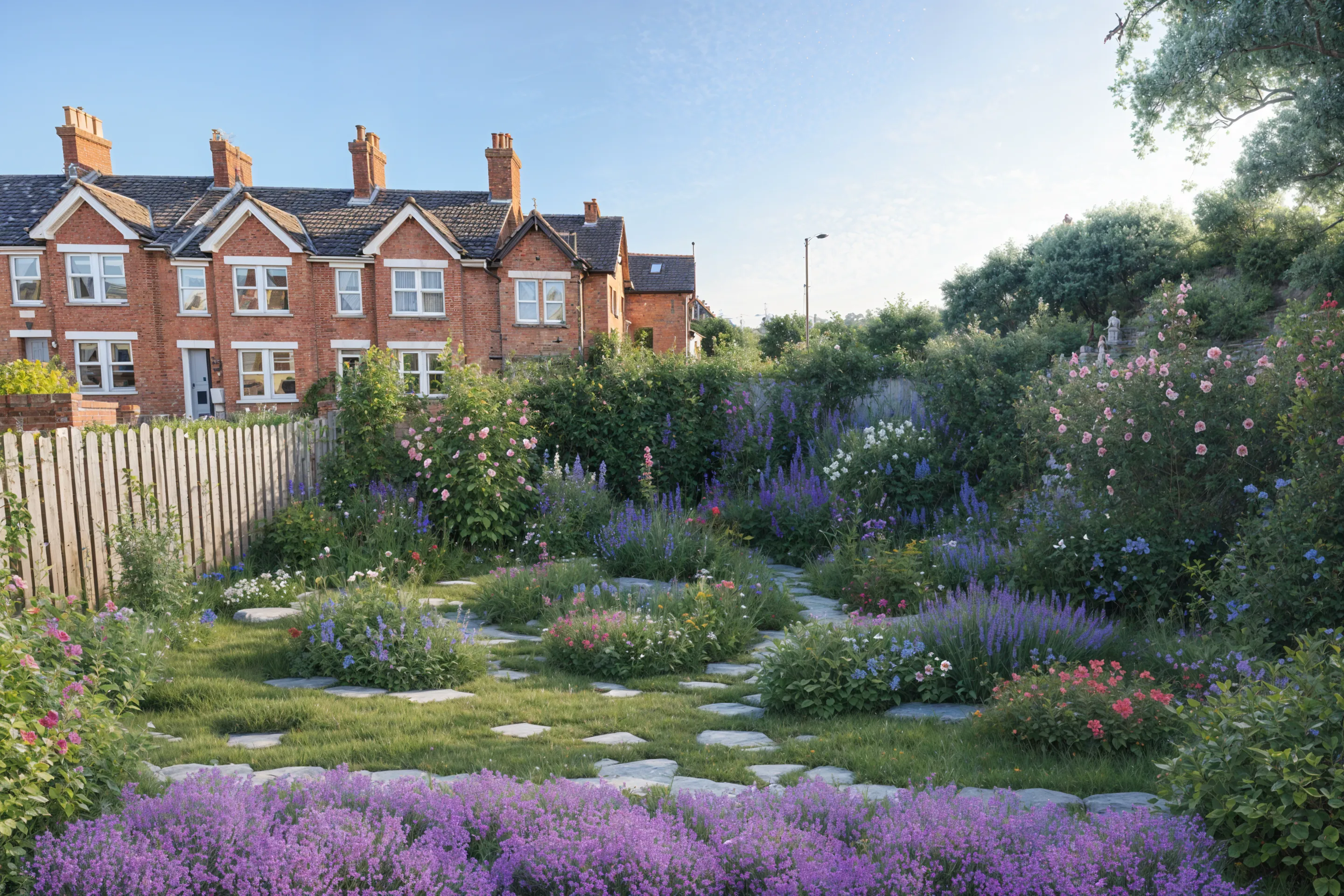
Cottage gardens avoid rigid structure, favouring soft curves and organic movement. Meandering paths, uneven borders, and plants spilling over edges create a sense of natural freedom. The design feels spontaneous yet carefully layered, blending structure with a touch of wildness. The image above was created with AI using the photo of the users garden and their stylistic choices. Create your garden with AI here
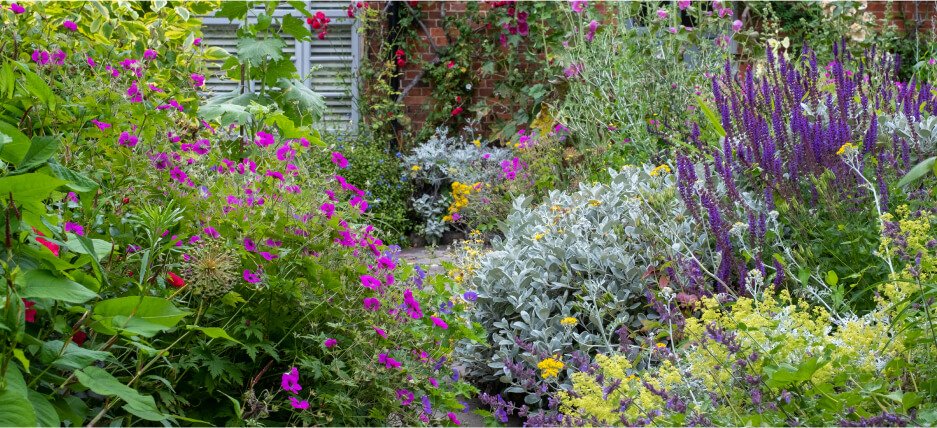
Abundance is the heart of every cottage garden. Borders are densely filled with flowering perennials, annuals, herbs, and climbers. Plants intermingle freely—tall spires like delphiniums rise above mounded geraniums, while ground covers weave between stepping stones. This layered effect creates depth, colour, and a sense of joyful disorder.
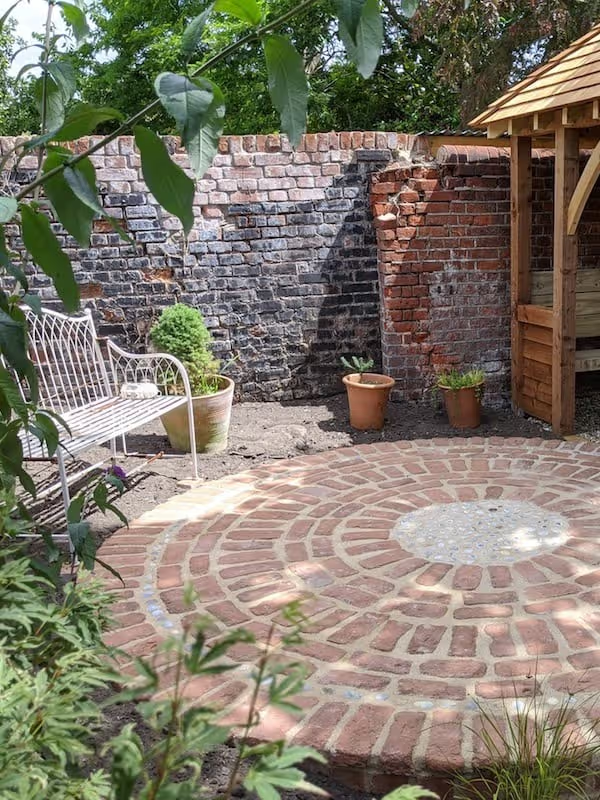
Natural, weathered materials define the look. Think reclaimed brick paths, timber fences, stone walls, and gravel walkways softened by self-seeded plants. Aged finishes and patina add authenticity, while simple wooden benches, wrought-iron gates, or terracotta pots enhance the garden’s timeless appeal. Rescape AI knows this and will give you cottage garden ideas from an uploaded photo of your garden. Join Now
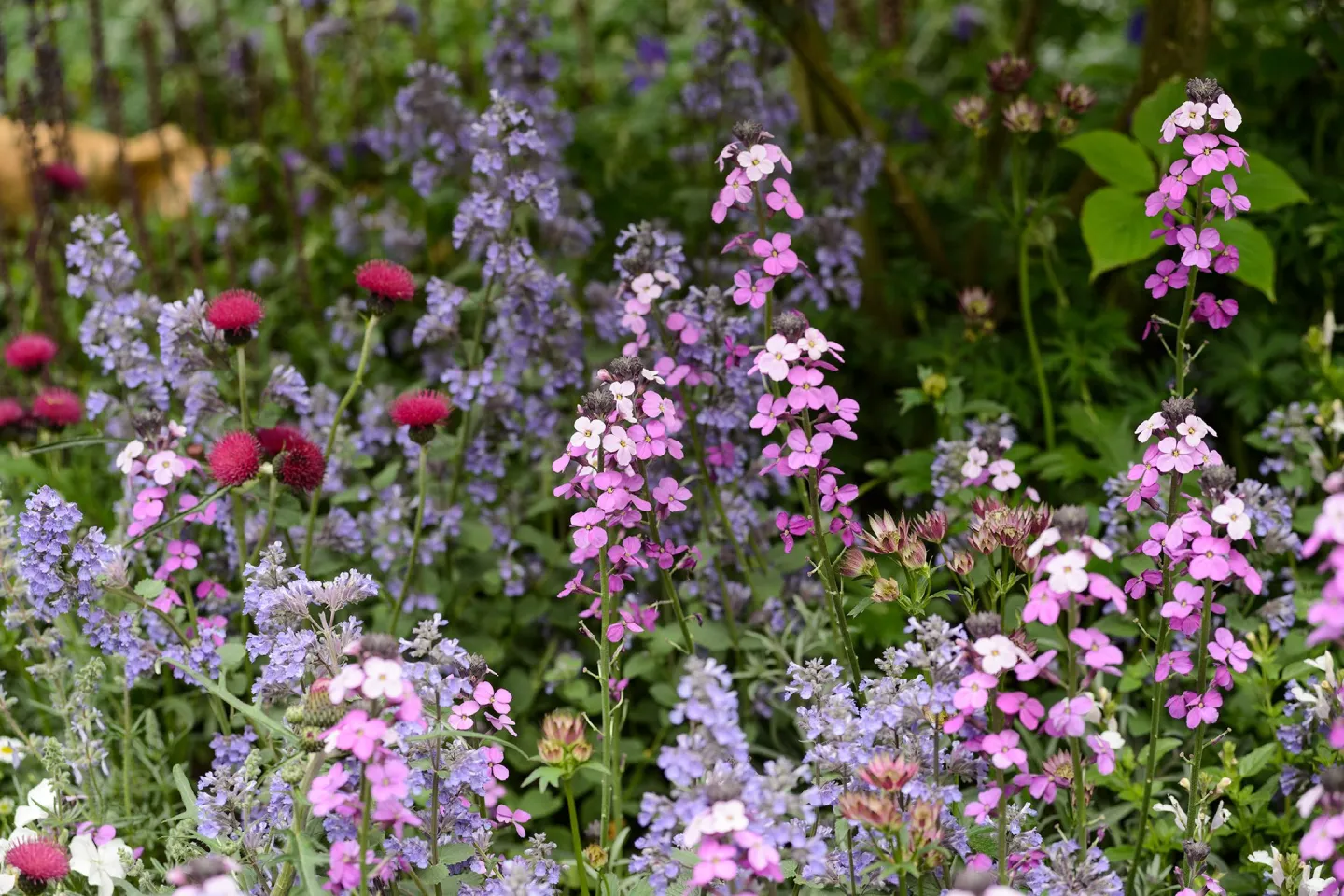
True to their origins as practical home gardens, cottage gardens mix decorative and useful plants. Fragrant herbs like thyme, sage, and rosemary sit beside colourful perennials and vegetables. Strawberries, rhubarb, and climbing beans blend seamlessly into borders, uniting beauty with productivity.

Cottage gardens change beautifully through the seasons. Spring brings tulips and forget-me-nots, summer bursts with roses and lavender, and autumn glows with dahlias and asters. Even in winter, evergreens, seed heads, and textured stems keep the garden alive with quiet character.
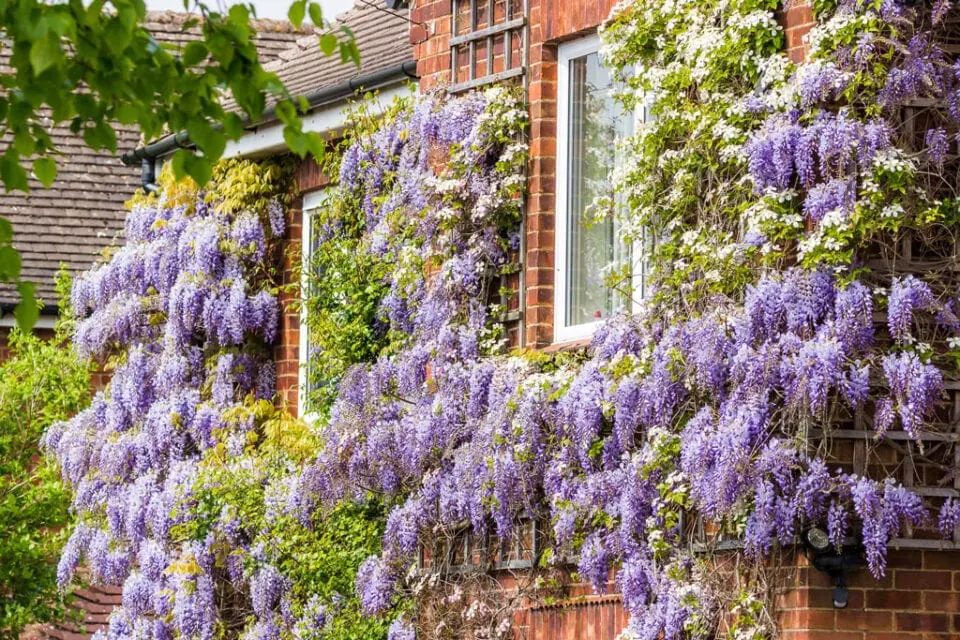
Vertical elements play a key role in cottage design. Arches, trellises, and pergolas support climbing roses, honeysuckle, or clematis, adding height and fragrance. These vertical layers frame views and create romantic focal points throughout the garden.

Cottage gardens are havens for wildlife. Nectar-rich flowers attract bees and butterflies, while dense planting provides shelter for birds and insects. Small ponds, nesting boxes, and wild corners enhance biodiversity, turning the garden into a living ecosystem.
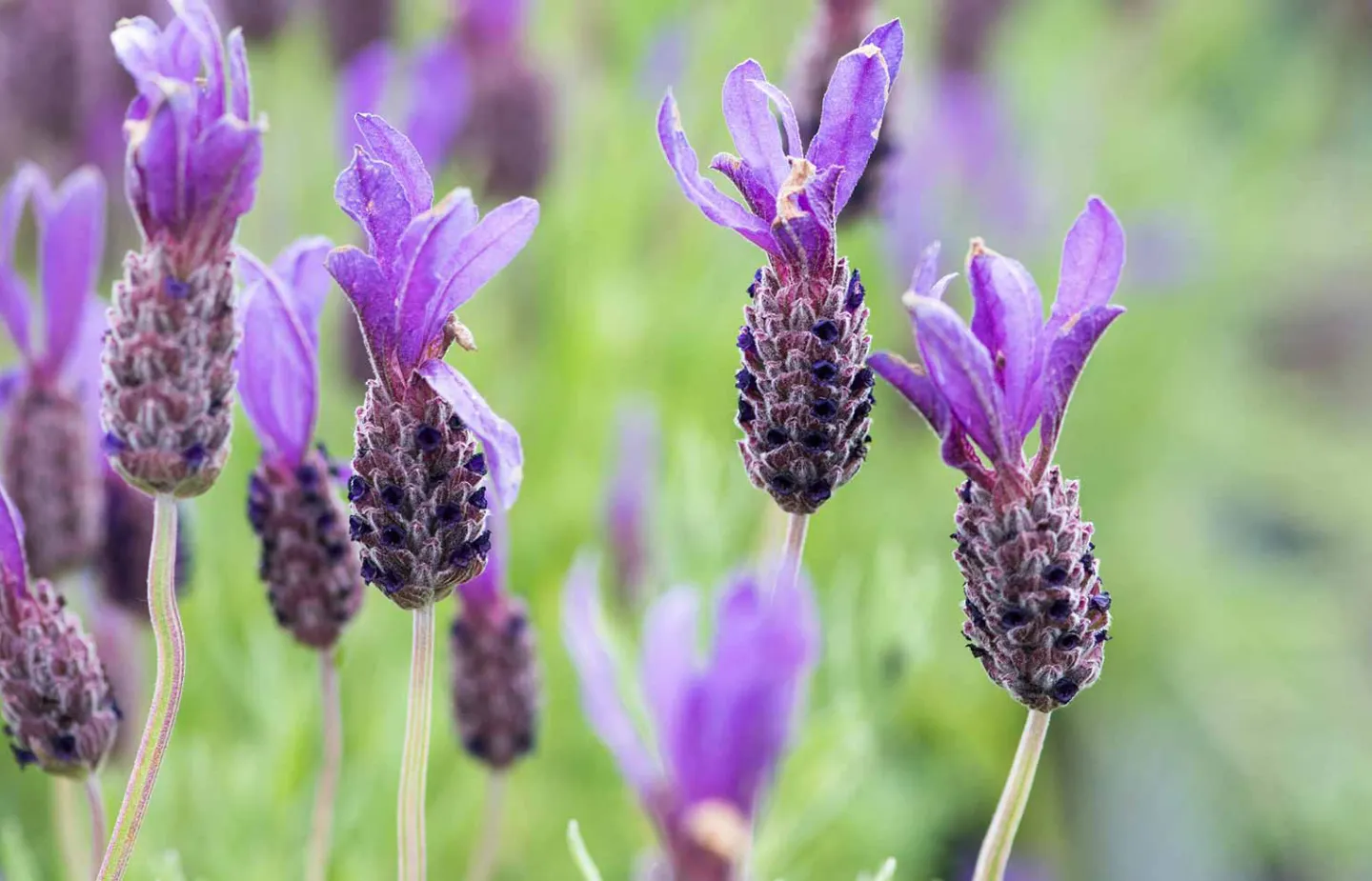
The colour scheme is lush yet harmonious—pastel pinks, purples, blues, and whites dominate, punctuated by the occasional bold accent. Fragrance is equally important: roses, sweet peas, and lavender fill the air with scent, engaging all the senses.
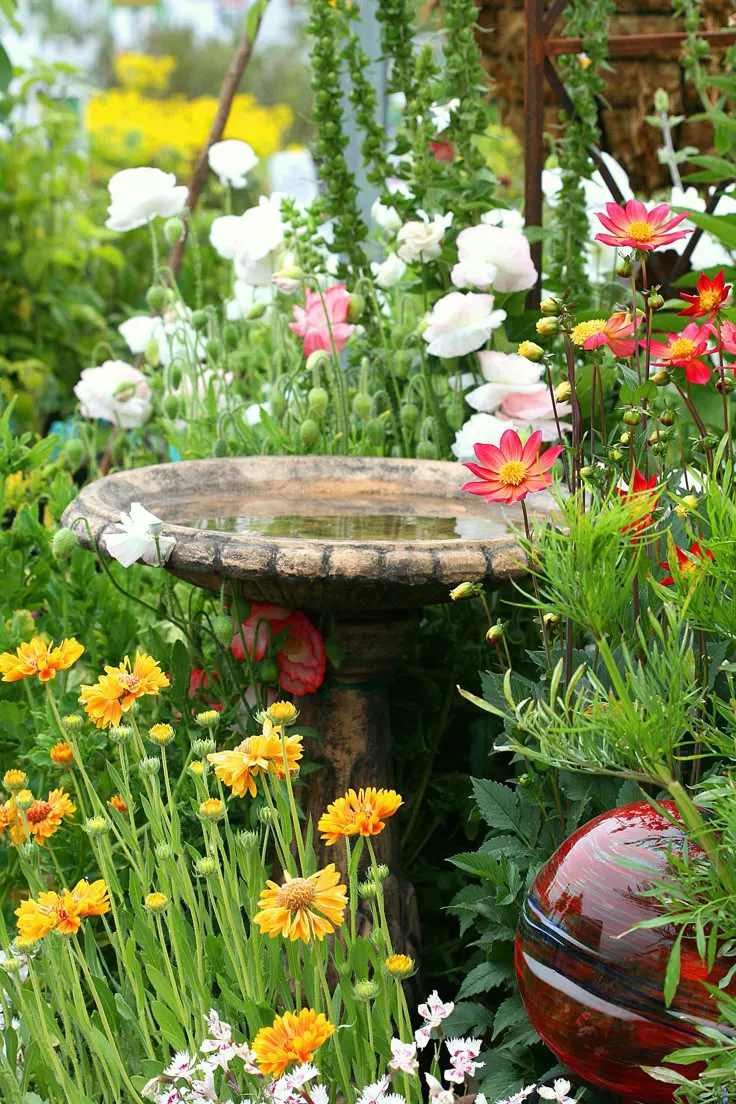
Small touches add personality to cottage gardens. Weathered garden ornaments, rustic birdbaths, and vintage containers bring individuality. Nothing feels too polished; each detail contributes to the storybook atmosphere of comfort and nostalgia.
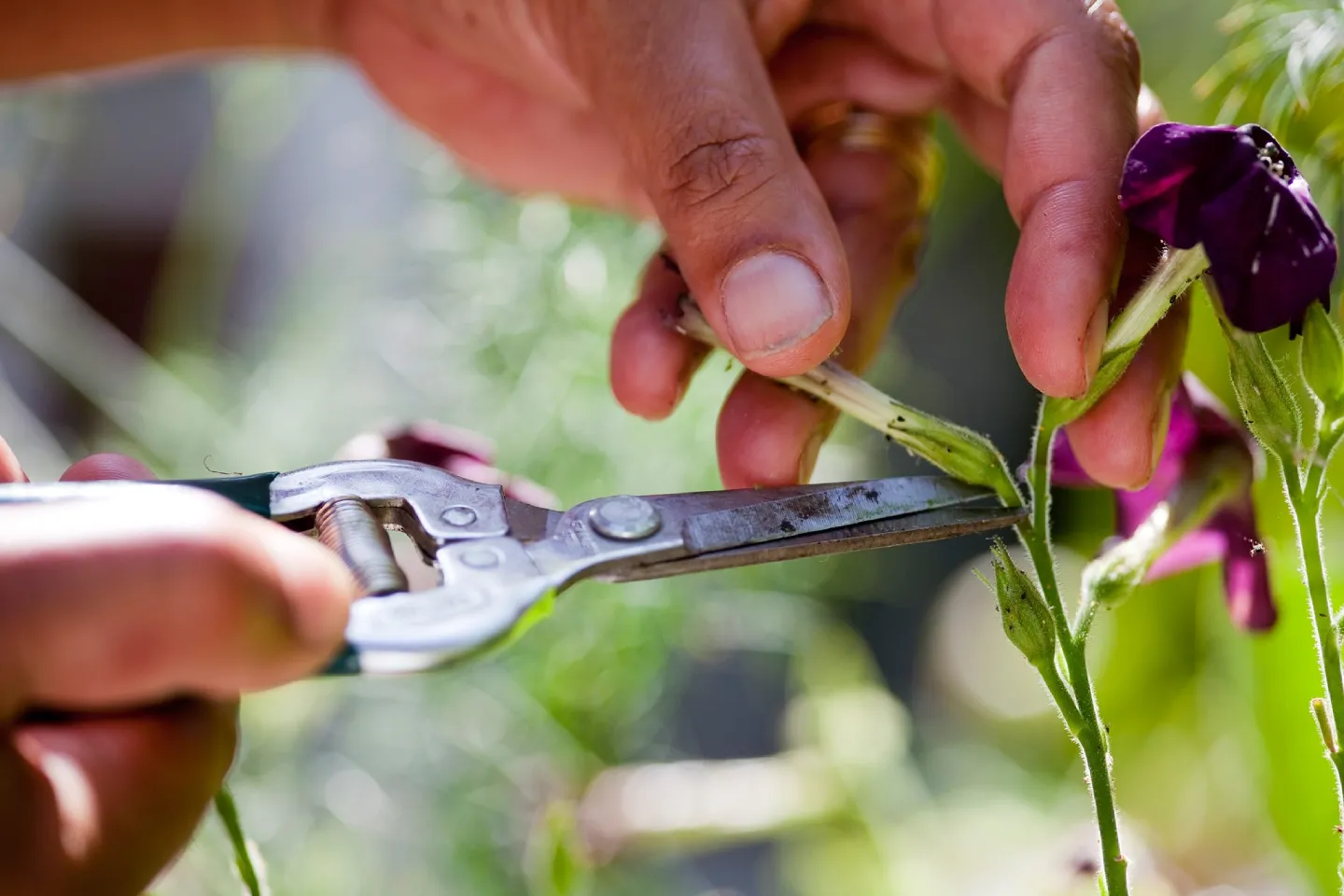
Cottage gardens thrive under a light touch. Instead of strict pruning or rigid control, plants are allowed to self-seed and mingle. Regular deadheading encourages blooms, while mulch keeps weeds down. This approach celebrates imperfection and natural beauty.
Cottage gardens celebrate the joy of abundance, imperfection, and connection to nature. With their informal layouts, overflowing borders, and timeless charm, they offer a perfect blend of beauty and practicality. Whether sprawling across a countryside plot or blooming in a small urban garden, the cottage style creates an inviting retreat filled with life, colour, and character.
A cottage garden design is known for its informal layout, dense planting, and romantic charm. Unlike structured modern gardens, cottage-style gardens overflow with flowers, herbs, and climbing plants. The focus is on natural beauty, using soft curves, rustic materials, and abundant colour to create a relaxed, lived-in feel inspired by traditional English gardens.
To enjoy an easy-care cottage garden, choose hardy perennials and self-seeding plants like lavender, geraniums, foxgloves, and catmint. These low-maintenance cottage garden plants return each year with minimal effort. Mulching, grouping plants by water needs, and allowing natural growth patterns reduce upkeep while preserving the garden’s lush, informal look.
The most loved English cottage garden flowers include roses, delphiniums, hollyhocks, lavender, and sweet peas. Combine them with herbs such as thyme and sage for fragrance and texture. Mixing perennials with annuals ensures year-round interest and captures the layered abundance that defines classic cottage garden planting.
Absolutely. Even in a small yard or balcony, you can create a small cottage garden look by using containers, raised beds, and vertical climbers. Add fragrant plants like lavender or climbing roses and let foliage spill naturally over edges. This compact cottage garden idea brings countryside charm to any urban space.
Wildlife-friendly cottage gardens attract pollinators and birds with nectar-rich blooms like foxgloves, cosmos, and echinacea. Include water sources such as birdbaths or mini ponds, and avoid pesticides to support biodiversity. Dense planting and natural habitats create a thriving, eco-friendly garden that’s both beautiful and sustainable.
Cottage-style landscaping favours natural, timeworn materials. Use reclaimed brick or stone for pathways, timber or wrought-iron fences, and terracotta pots for planting. Weathered finishes and organic textures create warmth and authenticity, blending perfectly with the garden’s soft planting and old-world atmosphere.
© Rescapeai 2024
[email protected]